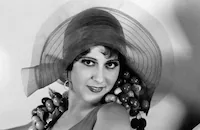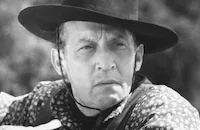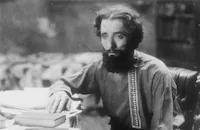The Hunchback of Notre Dame

Brief Synopsis
Cast & Crew
Wallace Worsley
Lon Chaney
Ernest Torrence
Patsy Ruth Miller
Norman Kerry
Kate Lester
Film Details
Technical Specs

Synopsis
Quasimodo, an inarticulate, deformed human being, who is the bellringer of the Cathedral of Notre Dame, sacrifices his life to save Esmeralda, a Gypsy girl who once befriended him, from Jehan, the hunchback's evil master and brother to Dom Claude, chief priest of the cathedral.

Director
Wallace Worsley
Cast

Lon Chaney

Ernest Torrence

Patsy Ruth Miller

Norman Kerry
Kate Lester

Brandon Hurst

Raymond Hatton

Tully Marshall

Nigel De Brulier
Harry Von Meter
Gladys Brockwell
Eulalie Jensen
Winifred Bryson
Nick De Ruiz
Edwin Wallock
W. Ray Meyers
William Parke Sr.
John Cossar
Roy Laidlaw
George Macquarrie
Jay Hunt
Harry De Vere
Pearl Tupper
Eva Lewis
Jane Sherman
Helen Bruneau
Gladys Johnston
Cesare Gravina
Crew

Videos
Movie Clip




Promo
Film Details
Technical Specs

Articles
The Hunchback of Notre Dame (1923) on Blu-ray
This adaptation largely hews to the narrative of Victor Hugo's novel. Chaney plays Quasimodo, the horribly misshapen, deaf and half blind bell-ringer at Notre Dame, nominally raised by Don Claudio (Nigel De Brulier), the Archdeacon of Notre Dame. He lives in the bell tower of the cathedral and watches the revelry in the public space below the parapets of the church, where he becomes fascinated by Esmeralda (Patsy Ruth Miller), the gypsy dancer and daughter of Clopin (Ernest Torrence), the King of the Beggars. When she shows him kindness, he becomes a devoted protector even while the scheming Jehan (Brandon Hurst), brother to Don Claudio, plots to take Esmeralda as his own.
Wallace Worsley, who previously directed Chaney in four features (among them the twisted 1920 crime thriller The Penalty), dutifully (if flatly) directs this massive production (he wasn't Chaney's first choice... or second... or third). The major characters get their introductions in turn before Quasimodo's story even begins and the mechanics of the relationships are spelled out in headlines that suggest where the story is heading, even if it turns out a bit misleading. When the dashing womanizer and king's guard Phoebus (Norman Kerry) sweeps the innocent Esmeralda off her feet with pretty words and gallant displays, the scene dissolves into an image of a moth in spider's web, a visual metaphor that is a charming as it is obvious. It's a momentary truth, however, as Phoebus is somehow transformed by her innocence and trust and escorts her home untouched. Esmeralda has that effect on everyone, it seems, except Jehan, who sets Quasimodo to kidnap her and then abandons the wretch when he's caught by the royal guards and sentenced to the lash in front of a cheering crowd.
The most glaring change from the novel is splitting the character of Claude Frollo, the Archdeacon of Notre Dame, into two roles, each incarnating on one of the conflicting halves of his character. Don Claudio is the Archdeacon here, a true, moral man of the church and kindly protector of Quasimodo, while his lustful, corrupt side is spun off into the character of Jehan, his secular brother who keeps up the façade of upper class morality while working with the underworld. One wonders if the change was made to placate the church. In this version, the religious authority is nothing but pure and holy. And, quite frankly, impotent. Where Frollo was keenly aware of everything happening outside the doors of his cathedral, Don Claudio is oblivious to even the wildest revelry, wandering out of his cloistered church only when it fits the dramatic needs of the script. And where Quasimodo's devotion to Frollo arises from his debt to his caretaker and creates a powerful conflict when he takes on the role of protector of Esmeralda, there is no such relationship to bond him to Jehan or explain why he agrees to do the dirty work for this ne'er do well.
The storytelling is mix of the grandiose and the clumsy, with Chaney largely anchoring the film and the size and scope of the spectacle elevating production. The sets are magnificent, the biggest that Universal had built to date (the giant exterior of the cathedral and surrounding building remained standing for decades and were reused for Universal's defining horror classics of the thirties), and the Cathedral exterior is extended by a hanging miniature so it towers over the public square in in front of the church, where the cast of thousands is gathered for the opening festival sequence and again for the climactic uprising as Clopin leads an assault on the cathedral. It was convincing enough to make some believe that Universal actually shot on location rather than on their backlot.
Chaney's make-up is spectacularly grotesque, with a gargoylish face of distorted cheekbones, a distended eyeball, and teeth broken to nubs, mats of coarse hair across his chest and shoulders like a werewolf, and of course his hump and bent stance (the strap he designed to hold his plaster hump in place also kept him from standing upright). But the make-up is only the surface. Chaney gave Quasimodo a dynamic physical life, scrambling down climbing ropes (he was at times doubled by a stunt man) or hanging from the bell rope like a big kid, and a childlike innocence that gave every emotion a purity and intensity that drove his loyalties. He's less beast than arrested child in a deformed adult body, treated like an animal for so long he's become accustomed to it, yet still longing for contact. His affection for Esmeralda may begin with sexual attraction but her kindness to him in the face of abuse from everyone else makes him loyal and dedicated, like an animal bonded to its human.
Patsy Ruth Miller manages to keep her innocence even while dancing for the crowds, becoming the conscience of the underworld, and Ernest Torrence is superb as the King of the Beggars, reluctantly giving in to her pleas of charity. Torrence moved freely between villains and heroes and between serious and comic roles in the silent cinema. He was a physically towering man with a big personality that he wielded well in his character turns and he plays Clopin as a man so powerful he doesn't need to make a show of physical intimidation. The immediate response of the criminal hordes to his orders, his gestures, even a quick glance, confirms his authority.
Lon Chaney created a lot of twisted wretches, vengeful villains, and criminal masterminds, but Quasimodo remains his most sympathetic screen character. He gives a big, broad performance befitting the film and the character, a simple creature with the look and strength of a beast and the innocence and loyalty of a child.
According to the liner notes, there are no existing original 35mm prints of the film and no camera negative (not that uncommon for a 1923 feature), so this edition was mastered for Blu-ray from a 16mm reduction print struck in 1926 from the original camera negative, a restoration produced by David Shepard and Serge Bromberg. It's the same source used for the 2007 DVD release from Image (titled The Hunchback of Notre Dame: Ultimate Edition) and apparently the closest to the original release that is known to archivists. The wear on the print is evident in a steady rain of minor surface scuffs and light vertical scratches down the image, but the trade-off is an improvement in sharpness and image from the earlier Image release (which was already far and away better than the other public domain editions on the market). It also features the orchestral score compiled by Donald Hunsberger and adapted and arranged by Robert Israel, conducting a small orchestra in the Czech Republic, from that earlier DVD release. The recording is bright and full, a lively and varied piece that draws in the viewer but ultimately lacks the dramatic scope and darkness that the story calls for.
New to this edition is a slideshow gallery with over 100 original production and publicity stills set to selections from the score (it runs about 14 minutes) and a digital reproduction of the original souvenir program (both mastered in HD). Carried over from the Ultimate Edition DVD is the commentary track by Lon Chaney biographer and professional make-up artist Michael F. Blake, the (incomplete) 1915 short Alas and Alack featuring Chaney in two roles (one of them a hunchback) but missing the final act of the story, and newsreel footage of Chaney (out of costume) on the Cathedral set of Hunchback. The accompanying booklet features an informative (and well-illustrated) essay on the production of the film written by Michael F. Blake written for the earlier DVD release.
by Sean Axmaker

The Hunchback of Notre Dame (1923) on Blu-ray
The Hunchback of Notre Dame (1923)
Victor Hugo's tragic tale of the deformed bellringer and his love for Esmeralda, a doomed gypsy girl, has been filmed so many times that an accurate count of all the versions would probably be difficult to pinpoint but it's not hard to see the film's ageless appeal. While you may find movie lovers who cite the 1939 Charles Laughton version or even the 1996 Disney animated version as favorite interpretations, the general consensus among actors (Burt Lancaster and Orson Welles to name a few) is that Chaney remains the definitive Quasimodo.
The 1923 version is remarkable for other reasons as well. The set alone spanned 19 acres and the actual production required the services of 750 crew members. One of the biggest challenges was finding enough costumes to clothe the more than two thousand extras. The night sequences, which took two months to film, were also a major headache and still hold the record for the largest number of electricians ever employed on one film. No less troublesome to create was Chaney's grotesque makeup which took three hours to apply and included the innovative use of cotton and flexible collodion, adhesive tape, nose putty (for warts), and plaster for a twenty pound hump on his back. Although audiences at the time assumed Chaney did all his own stunt work in the film, he did, in fact, use a stunt double - Joe Bonomo - who was used in the scene where Quasimodo slides down a rope in front of the church and rescues Esmeralda from the King's guards.
Director: Wallace Worsley
Producer: Carl Laemmle
Screenplay: Edward T. Lowe, Jr.
Cinematography: Robert Newhard, Tony Kornman
Art Direction: Elmer E. Sheeley, Sidney Ullman Cast: Lon Chaney (Quasimodo), Ernest Torrance (Clopin), Patsy Ruth Miller (Esmeralda), Norman Kerry (Phoebus), Kate Lester (Madame de Gondelaurier).
BW-99m.
by Jeff Stafford
The Hunchback of Notre Dame (1923)
The Hunchback of Notre Dame (1923) - The Ultimate Edition of Lon Chaney's 1923 THE HUNCHBACK OF NOTRE DAME on DVD
Until its conclusion, Chaney's Hunchback is a fairly faithful simplification of Victor Hugo's elaborate historical romance. A straight pageant with few cinematic touches, the entire show belongs to Lon Chaney and his magnetic characterization. While the other characters are established in florid inter-titles, Chaney's expressive mime earns rather than demands audience sympathy as the misshapen Quasimodo. Chaney's physical transformation is so convincing, patrons could be forgiven for believing that he could magically change his shape to fit his horrid characters.
Synopsis: Mentally impaired hunchback Quasimodo (Lon Chaney) is crowned King of the Fools on a big Paris festival day. The beggar chieftain Clopin (Ernest Torrence) dispatches his thieves and fake beggars to work the crowd while his adopted daughter Esmeralda (Patsy Ruth Miller) entertains as a gypsy dancer. She immediately wins the heart of the officer Phoebus (Norman Kerry) while Quasimodo looks on, also struck by her beauty. Esmeralda saves the poet Gringoire (Raymond Hatton) from Clopin's rabble while the unscrupulous Jehan (Brandon Hurst) uses Quasimodo in an attempt to kidnap the dancer. She's rescued by Phoebus and Quasimodo is punished by a public whipping. Clopin's beggars are ready to strike back at the hated aristocrats when the jealous Jehan stabs Phoebus, framing Esmeralda for the crime. Quasimodo saves her from hanging and carries her to the sanctuary of the church. The state and the mob both want Esmeralda, but the hunchback defends Notre Dame from all entry.
The Hunchback of Notre Dame became one of Universal's biggest box office draws of the 1920s, making up in part for earlier expensive disappointments. Its lavish Paris set covered a huge chunk of Universal City and remained as the background for the studio's later cycle of horror pictures. Thousands of extras were filmed before the replica of the Notre Dame cathedral. Elaborate special effects created the illusion of the cathedral's tower and the surrounding city.
Wallace Worsley's dull direction showcases the sets, occasionally finding a good high angle to represent Quasimodo's point of view. Slack storytelling fumbles an entire major subplot. An elaborate extended flashback establishes that Esmeralda is really the kidnapped daughter of a noblewoman, now driven mad with grief. (spoiler) After that buildup we expect a melodramatic revelation, something on the order of Griffith's Orphans of the Storm. The issue is instead resolved in a perfunctory, offhand manner, robbing Esmeralda of a major emotional payoff.
The script uses 'poetic' visuals to convey certain ideas. When Phoebus seduces Esmeralda, we're shown an insect caught in a spider's web (an effect ruined by a redundant inter-title). Another 'visual simile' elides the actual moment of a stabbing: as a knife is drawn, the image cuts to a candle being blown out. When we cut back, the evil deed is done. The famous whipping scene is reduced to almost nothing. The whip flies once, and Quasimodo reacts once. Not one lash occurs on screen, and the scene is over before it begins. Quasimodo topples stones and molten lead from the battlements of the church, but few of the consequences are shown. We have to guess why Clopin is suddenly in such terrible shape.
The original picture almost certainly displayed a great deal more violence. According to expert commentator Michael F. Blake, 1923's censors were to blame. To an editor's eye, it looks very much as if the censorship occurred during a re-cut for Universal's 16mm Show-at-Home prints. One close-up knife wound is still intact, most likely retained because it's the only indication that a stabbing has occurred. Without it we'd never know why the victim later collapses and dies, a major story point.
We've all read about the extremes of Chaney's makeup. A harness under his full body suit held the heavy hump in place and prevented the actor from standing up straight. Quasimodo's deformities are convincing even when he clambers up and down the cathedral exterior. Quasimodo's misshapen face and dead eye must have been a nightmare for audiences of 1923, but the character generates considerable sympathy. His acting style operates on a different plane than the other players, with their poses and static expressions -- the "Man of a Thousand Faces" has found a more direct emotional connection with his audience.
Despite Lon Chaney's presence The Hunchback isn't a horror film. The imposed bittersweet ending softens the book's downbeat finale: years later, dungeon keepers find Quasimodo and Esmeralda skeletal corpses joined in a deathly embrace.
Image and Blackhawk's Ultimate Edition DVD of The Hunchback of Notre Dame is said to be from an original 1924 print that David Shepard acquired almost immediately after the previous Image disc release. It's not clear if it is actually longer because the new copy has been transferred at a slightly lower frame rate. We are told that this copy has original main titles from 1923, as opposed to the 1928 reissue credits on the previous release.
The 16mm source is of very good quality. Although not as sharp as 35mm, the image is stable, with few breaks. Many hairline scratches are visible. Viewers spoiled by other restorations may not think it that much of an improvement over the older disc. The new disc is definitely sharper, revealing more film damage along with the additional detail. The framing is also improved, with a small amount of extra image on all four sides.
The impressive orchestral score was compiled by Donald Hunsburger and adapted and conducted by Robert Israel in 2006. It greatly adds to the film's sweep and drama.
Kino's extras add a couple of new items to the contents of previous editions. Michael F. Blake does commentary duty, talking about the film's background and explaining the content of a few missing sections. At one point a dress and shoes for Esmeralda to wear just show up in the cathedral loft; in a lost scene, Quasimodo originally traded a box of candles for them. In a newsreel outtake, Chaney demonstrates how he climbed the cathedral set ("There's not much to it."). An image gallery contains old ads, posters and a large number of original stills.
A sizeable excerpt is presented of a 1913 film called Alas and Alack, in which new Universal player Chaney appears in two roles, one of them a hunchback!
Blake provides the essay for an insert booklet, which is accompanied by a reproduction of the film's original souvenir program. Lastly, a set of about twenty 3-D photos of the sets and Chaney are presented in the red-blue anaglyphic process. Two pair of 3-D glasses are included.
For more information about The Hunchback of Notre Dame, visit Image Home Entertainment. To order The Hunchback of Notre Dame, go to TCM Shopping.
by Glenn Erickson
The Hunchback of Notre Dame (1923) - The Ultimate Edition of Lon Chaney's 1923 THE HUNCHBACK OF NOTRE DAME on DVD
Quotes
Trivia
Only a small clip of a now lost scene is all that exists in 35mm. All other print sources come from 16mm show-at-home prints issued in the 1920s.
Notes
For information on other film adaptations of Victor Hugo's novel, please consult the entry for the 1939 William Dieterle-directed RKO release starring Charles Laughton and Maureen O'Hara in AFI Catalog of Feature Films, 1931-40.















